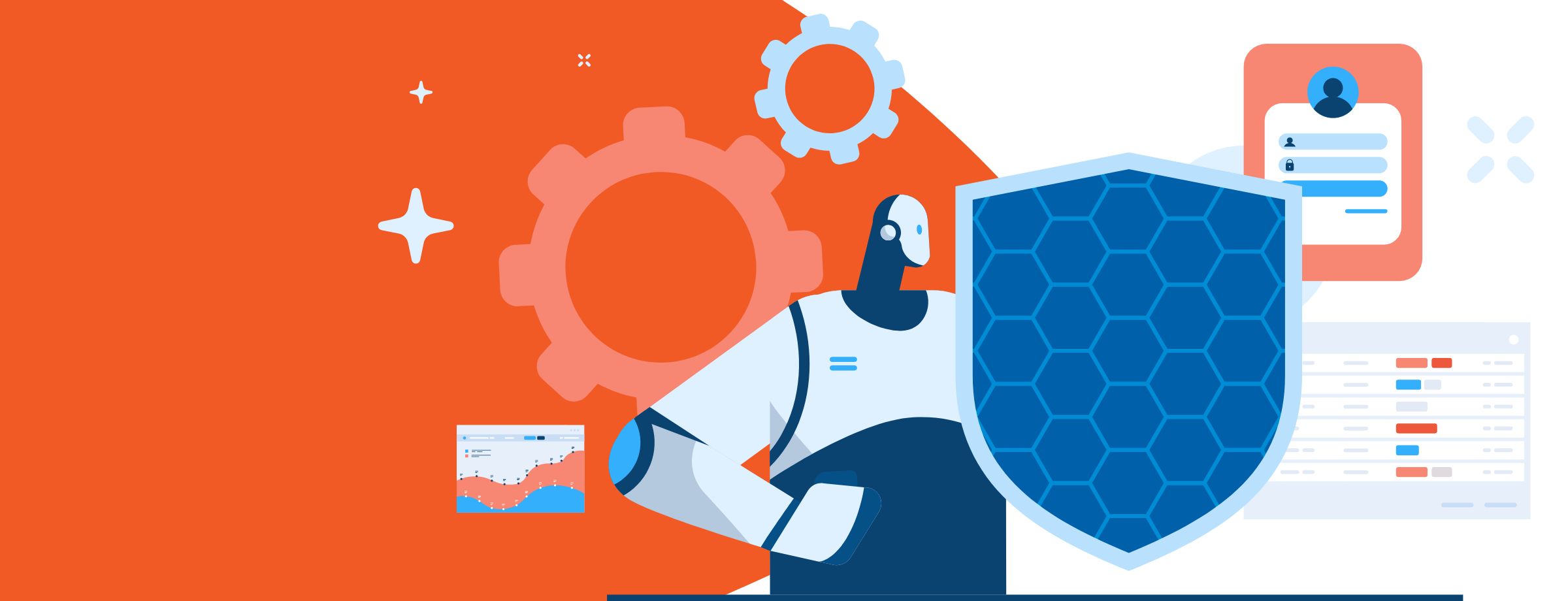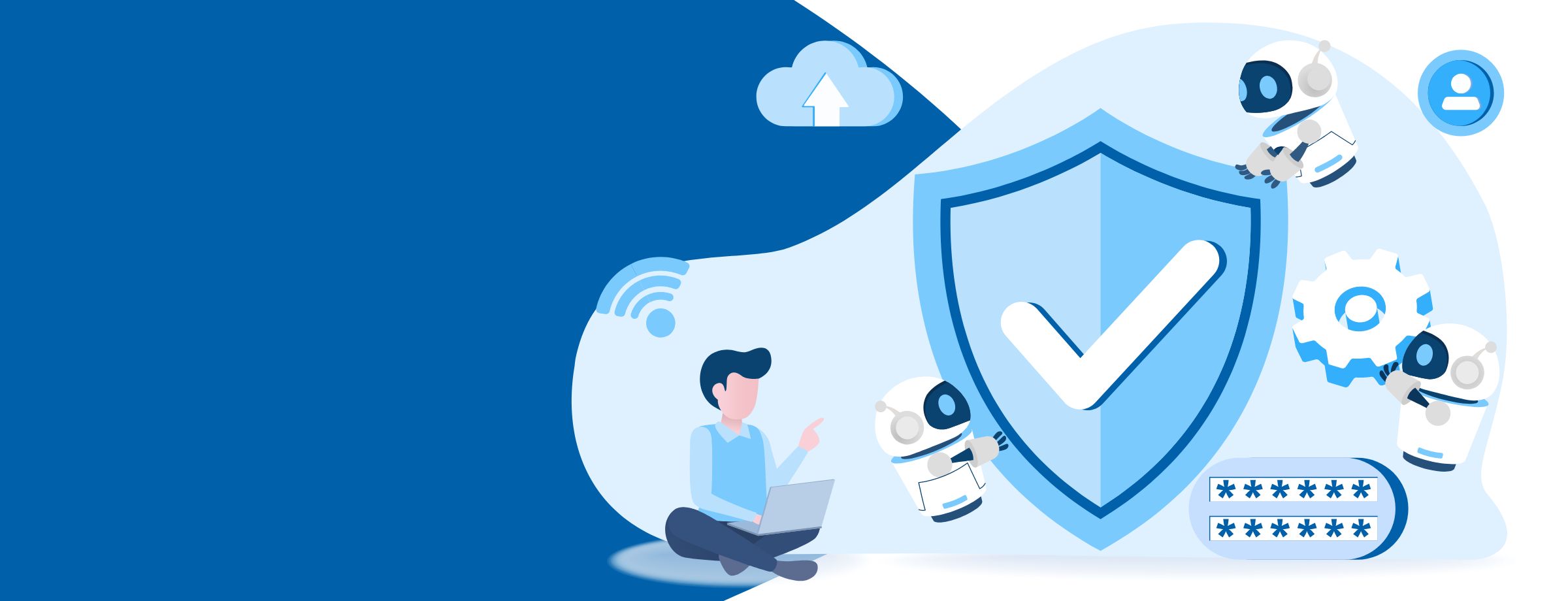AI threat detection for MSPs is no longer optional, it’s becoming essential for securing Copilot and other AI-powered tools.
AI adoption is accelerating and for managed service providers (MSPs), that means a shift in how client environments need to be secured. Tools like Microsoft Copilot interact with large volumes of sensitive business data across Microsoft 365, cloud applications, and endpoint systems. Without clearly defined access controls, compliance policies and security monitoring, these tools can introduce new exposure points that many organizations aren’t prepared to manage.
This isn’t about cybercriminals using AI to launch attacks. It’s about making sure your clients’ environments are ready for AI, before those tools go live.
A strong detection and response strategy helps MSPs monitor how AI is being used, detect when something looks off, and respond quickly to minimize risk. Whether it’s an employee asking Copilot for information they shouldn’t see or a misconfigured policy that exposes too much data. MSPs need the tools to see what’s happening in real time and act on it.
Start building your MSP security strategy for AI:
Download the AI Cybersecurity Guide
to secure your clients from day one.
In this blog, we look at how MSPs can strengthen Copilot readiness with Microsoft Defender XDR, Sentinel SIEM and Office Protect. This supports not just threat detection, but secure, responsible AI adoption.
Why traditional cybersecurity isn’t built for today’s AI risk surface
Many MSPs already rely on strong security fundamentals—firewalls, endpoint protection, multi-factor authentication—to protect client environments. But integrating AI tools like Copilot changes how data flows, how users interact with systems and how security teams need to respond.
Traditional tools weren’t designed to monitor how AI interacts with data across multiple surfaces. AI expands the volume of user interactions, automates content generation and engages with cloud services in new ways, all of which introduce new dimensions to existing security frameworks.
Here’s what that looks like in practice:
- Higher data velocity: AI increases how quickly information is accessed, moved and created (especially in M365).
- More complex permissions: Users working with AI often need broader access, which can create excessive privilege risks if not reviewed regularly.
- Expanded signal noise: AI tools create more activity, which can overwhelm legacy detection systems with logs and alerts.
According to the 2024 Gartner Report, 62% of security professionals say AI has made threat identification more complex. This is not because AI is inherently dangerous, but because it exposes gaps in how organizations monitor, classify and control access to data. Darktrace also reports that phishing attempts tied to AI activity are harder to distinguish from legitimate communication, due to improved language generation and automation.
These aren’t futuristic risks. They’re today’s challenges and MSPs who can surface the right signals from these new environments will be the ones positioned to lead secure adoption.
AI threat detection for MSPs: What to prioritize for Copilot readiness
Building a secure, AI-ready environment means going beyond static defenses. It’s about equipping clients with the visibility and response capabilities needed to confidently integrate tools like Microsoft Copilot.
Rather than reacting to incidents, MSPs can lead with a proactive approach to security configuration, threat monitoring, and policy enforcement, especially as AI increases the speed and complexity of user interactions.
Here are the three core areas where MSPs should focus:
1. Unified Threat Detection with Microsoft Defender XDR
Once AI is active across Microsoft 365, Azure, and endpoint workloads, visibility becomes essential. Microsoft Defender XDR enables MSPs to correlate activity across applications, users, and devices, giving context to unusual behavior.
With Defender XDR, MSPs can:
- Identify permission changes, elevated access, or unusual data flows tied to Copilot usage.
- Detect AI-generated content anomalies, including patterns that mimic phishing.
- Coordinate automated responses across identity, email and endpoint activity.
Organizations using Defender XDR report reducing detection time by up to 92%, this provides a critical advantage in fast-moving AI environments.
2. Centralized monitoring & policy enforcement with Microsoft Sentinel
AI tools like Copilot introduce more data movement, more user interaction and more variables across client environments. That means MSPs need a way to monitor these changes in real time, without getting buried in false alarms.
Microsoft Sentinel helps MSPs scale detection and response with AI-driven analytics and automation. It allows providers to centralize visibility across all tenants, making it easier to identify emerging risks tied to AI usage.
With Sentinel, MSPs can:
- Surface unusual patterns in how Copilot is accessed or used across environments
- Automate incident correlation to reduce manual investigation
- Customize detection rules that reflect each client’s AI security posture and business needs
According to recent reporting, organizations using Sentinel have reduced their threat detection and response time by 79%, making it a key asset in managing secure AI adoption at scale.
3. Strengthening Microsoft 365 environments with Office Protect
Copilot is deeply embedded into Microsoft 365 workloads pulling from everyday workflows like email, chat, calendars and shared documents to generate insights that feel seamless, but that also depend on secure, well-governed environments.
Office Protect delivers dedicated Managed Detection and Response (MDR) for Microsoft 365 tenants, helping MSPs maintain visibility and control as AI tools are introduced.
With Office Protect, MSPs can:
- Monitor user behavior and detect risky Copilot activity across M365
- Enforce client-specific security policies around AI usage and data exposure
- Respond quickly to access anomalies or misconfigurations before they result in incidents
Recent data from Gartner shows that 60% of AI-related security concerns stem from cloud platforms like Microsoft 365. As Copilot adoption grows, securing this environment becomes one of the most impactful ways MSPs can support responsible AI integration.
How MSPs turn AI-readiness into long-term business value
Helping clients prepare their environments for AI adoption does more than reduce risk, it sets the stage for strategic growth. When MSPs guide clients through proper configuration, policy enforcement, and continuous monitoring, they do more than implement a tool—they unlock a trusted advisor relationship.
AI-centric readiness services can:
- Strengthen client confidence in using tools like Microsoft Copilot across teams.
- Expand service offerings into compliance, monitoring, and automation.
- Improve internal efficiency through better detection, alerting, and remediation workflows.
According to IDC, MSPs that offer AI-focused security readiness services are 2.5x more likely to see cybersecurity revenue growth this year. A strong security posture helps clients move forward with AI confidently, creating opportunities for smarter service delivery and long-term business growth.
Stay ahead of AI cyber threats with proactive defense
Explore more in Sherweb’s AI security series
Learn how to strengthen every layer of AI readiness, from identity to data protection:
- Your MSP security strategy for AI starts here
Establish your foundation with assessments and Microsoft Copilot integration insights. - Why identity security is non-negotiable for AI tools
Master MFA, Conditional Access, and automated reviews for secure AI access. - How to protect client data in AI-Powered environments
Prevent leaks and compliance risks with Microsoft Purview, DLP, and Insider Risk Management.
Your next move: Guiding secure, Copilot-ready environments
AI is changing how work gets done and MSPs are the ones helping businesses adopt it responsibly. Tools like Defender XDR, Sentinel SIEM, and Office Protect aren’t just layers of protection; they’re part of a larger AI-readiness strategy that ensures Microsoft 365 environments are secure, compliant, and built to scale.
Sherweb partners with MSPs to simplify that journey. From tailored assessments and expert guidance to enablement tools and professional services, we help providers build, manage, and optimize environments that are ready for Copilot and future AI innovations.
Want to improve AI threat detection for your MSP clients? For more actionable frameworks, Microsoft integration tips and step-by-step recommendations:
Download Your AI Cybersecurity Guide Now!




